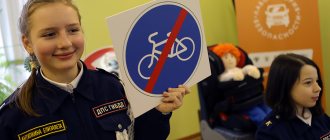Dexterity, grace, plasticity, flexibility, ideal posture and excellent physical shape are not a complete list of what dance classes can give your child. Choreography for children liberates and gives a sense of self-worth, develops communication skills in a team and reveals individuality, and for some it can become a real start in life and open the way to worldwide popularity.
All this, combined with an individual approach, attentive attitude and a subtle understanding of the nuances of working with children, will be given to you by the “School of Modern Choreography”. We invite children from 3 years old to choreography classes for children in small groups in the following areas:
- classical choreography;
- jazz;
- stretching (stretching);
- general physical training (GPP);
- professional variety and competitive choreography;
- choreography for figure skaters.
General physical training for children
Stretching for children
Choreography for figure skaters
Variety and competition group
Jazz - dancing for children
Classical choreography for children
What type of dance to choose for a child aged 3, 4, 5, 6, 7, 8, 9 and 10 years old
Each child is a bright individual with his own unique set of abilities and talents. The task of parents and teachers is their maximum disclosure and development. Therefore, doubts often arise about where it is better to send the child and in which direction he can manifest himself best.
When choosing a specific direction, you need to consider:
- age; (you can start classes with a child as young as 3 years old, but in general it’s good to start classes with children 5, 6, 7, 8, 9 and 10 years old)
- level of physical fitness;
- child's preferences.
Every caring parent understands that it is the child’s desire that is put at the forefront. This is the only way to not only give him a happy childhood, but also to maximize his potential, instill in his child a love of sports and self-confidence.
Whatever you choose, classical ballet or modern choreography for children, stretching classes or general physical training, we will be able to lay a solid foundation for the harmonious physical development of the child, develop flexibility, plasticity and coordination of movements. Regular classes will help instill musicality and creatively enrich a growing dancer, teach them to overcome difficulties, not give up and continue to work on themselves no matter what.
In our work with children, we treat everyone carefully and do not judge or compare with others. For us, the first place is the self-improvement of each child and the disclosure of his inner potential and talent, so that he develops day by day. For those who strive for a professional career, the “School of Modern Choreography” will provide the opportunity to go through all stages of development under the strict guidance of experienced mentors and achieve maximum results.
The benefits of choreography classes for children
It is difficult to overestimate the benefits of choreography for children. Regular classes allow children and schoolchildren to:
- develop an ear for music;
- feel the music, understand the classical works of famous composers;
- develop correct posture;
- gain a sense of balance;
- increase coordination of movements;
- improve physical fitness, stretching and flexibility, etc.
Choreography for children from 3 years old is aimed at general strengthening of all muscle groups, stretching, acquiring group work skills and, of course, learning the first bright dance numbers.
Not only girls, but also boys study at the “School of Modern Choreography”. Although we will not deny that their number is not the same. But this gives boys huge advantages, because they will definitely get the best male roles in ballet performances. And beautiful posture, a slender, well-developed body, strength and agility will be an additional, but extremely important bonus for guys.
In our work, together with children, we overcome difficulties, together we rejoice and experience failures, we look for ways to solve problems and achieve success. The child’s regular participation in creative competitions, festivals, city concerts and the genuine pride of parents in their child’s achievements is our main joy!
Consultation for parents “Choreography in kindergarten”
Consultation for parents of preschool children. “The benefits of choreography in kindergarten”
What are the benefits of dancing for preschool children, and at what age can you start dancing?
Preschool age
is the most important period in a child’s life.
The need for physical activity in preschool children is very great. It is at this time that the child’s personality is formed, the foundations of physical health, harmonious mental, moral and mental development are laid. During preschool age, the child grows and develops rapidly. Play and physical activity as a leading activity are very important at this age, so physical education should be given as much time and attention as possible. It is dance classes that allow us to creatively realize the need for movement, because the endless variety of movements allows us to strengthen the child’s skeleton and muscles. It is hardly possible to dispute the fact that childhood is especially receptive to beauty - music, dance. This allows us to look at the development of dance abilities in children in preschool institutions as an important and necessary process. What are the benefits of dancing for preschool children, and also, at what age can you start dancing?
These questions are probably asked by most parents who want to send their child to study dance.
The art of dance allows a child to reveal himself as a person and enriches his spiritual world. Children dance with great interest. Dance classes bring great benefits. By dancing to good, rhythmic music, communicating with peers, kids have fun, receive a charge of positive emotions, which liberate the child and give them the opportunity to splash out their energy. Thus, they have a beneficial effect on physical, mental, intellectual development, and also help to develop harmoniously and diversified. Children who regularly dance are physically developed, have good health, and are less likely to get sick. Physical activity and exercise contribute to: - Formation of correct posture; — Strengthening all muscle groups; — Development of coordination of movements, “muscle memory”; — Development of endurance; — Development of flexibility and plasticity; — Development of dexterity and speed of reaction. Classes enrich the child’s motor experience, improve motor skills, and develop active mental actions in the process of physical exercise. Through dance, a child begins to look at the world with different eyes. Dance classes also influence the intellectual development of children. Repeated repetition and memorization of movements perfectly trains memory, and the need to constantly monitor the music, the teacher and other children develops attention. They quickly learn to navigate in space, spatial and logical thinking is formed. Children can easily perform various changes. By pronouncing the words of songs, children form correct pronunciation and develop speech. Children learn to feel rhythm, feel music, relate it to dance - this contributes to the development of musicality. By interacting with other children, the child gains socialization skills. During classes, children not only perform prepared dances, but also often improvise. Thanks to transformation into various images, the child develops imagination. By learning about himself and the capabilities of his body, the child creates a fundamental basis for new discoveries. Public performances give a child the opportunity to become a little artist and feel confident on stage. Acting skills and a sense of responsibility are developed. Constant rehearsals cultivate endurance, hard work and patience, because correctly performed dance movements require considerable physical effort from the child. As practice shows, children who dance in kindergarten, by the time they enter school, have a fairly strong reserve of motor skills and abilities, have good memory, attention, and imagination. They develop correct posture and the correct arch of the foot. They are characterized by high efficiency, determination, and interest in learning. All this helps children quickly adapt to the new requirements imposed by educational activities. Dance classes in kindergarten do not aim to turn children into professional dancers. The program is aimed at strengthening and developing children's physical health, developing correct posture, and teaching children basic dance movements. In most cases, preschool children cannot master complex choreography and achieve high results. But dancing classes under the guidance of a professional and attentive teacher will allow you to express yourself and fully satisfy your need to be in motion, as well as prepare the basis for future victories. You can safely start dancing from the age of 3-4, since it is at this stage that active physical development occurs, but
it is necessary to take into account: - the child’s ability to endure physical activity; - the child’s desire to see if he likes dancing; — whether the child will be able to listen to the teacher and fulfill his requirements. By experiencing the feelings of beauty through music and movement, we instill in the child a love of art, thereby promoting artistic and aesthetic development.
We recommend watching:
Consultation for parents of the younger group of preschool educational institutions. Consultation for parents. How to introduce your child to your hometown. Consultation for kindergarten parents on traffic rules. Child safety Consultation for kindergarten parents. Education with a fairy tale
Similar articles:
Introducing young children to small folklore forms
Stubborn child. How to raise him
At what age can you sign up for choreography for children?
The School of Modern Choreography accepts children from 3 years old. Such an early start to classes provides many advantages, as children develop more harmoniously physically and spiritually. And the base received in preschool age will become a reliable foundation for further classes in ballet, modern choreography or other sports.
Every child can enroll in the “School of Modern Choreography” and continue their education as an adult. Classes are held in small groups, divided depending on the age of students and level of physical fitness. After all, some are just beginning to comprehend the interesting science of choreography, while others come with an already solid base. Therefore, we individually select a group for each new child.
For the youngest, the lesson lasts 45 minutes, for older groups the training lasts 55 minutes. Due to their age, children cannot practice continuously, so for them exercises are replaced by play and rest, and choreography classes for children are built on a smooth transition from simple to complex, with constant repetition of the material covered and gradual complication.
The school regularly holds reviews in a harmonious atmosphere, which allow us to assess the success of each child, his individual achievements and make a forecast for the future, which gives a powerful charge of motivation for further studies and obtaining greater results. Thus, with us, each child develops in the most comfortable rhythm and positive atmosphere.
Choreography for preschoolers and schoolchildren differs from classes for adults, because each child, regardless of age, needs to find his own approach, interest him, entice him to dance and inspire confidence in the choreographer. Adults make their own informed decisions and come to the “School of Modern Choreography” with a clear understanding of what they want to achieve and what efforts they are willing to make. Therefore, classes with children are often held in a playful way, immersing them in situations from fairy tales. As a result, kids sincerely begin to love dancing, go to classes with joy and develop both their body and imagination.
Personal development
It should also be noted that choreography classes influence the development of personal qualities that are important for long-term life, such as:
- ability to achieve goals and overcome difficulties;
- strength of will;
- ability to work for results;
- individual and team work skills.
Of course, a choreographer in a kindergarten does not force children to work up a sweat, forcefully do stretching exercises and hone dance steps to perfection. However, the guys have to work hard to learn a new dance and practice the movements.
Children learn to understand that the final result depends on the efforts of each member of their team, and in order to achieve the goal, they have to make efforts.
In kindergartens “Development of the XXI Century” choreography lessons are available to everyone. Classes are taught by talented and experienced teachers who develop programs taking into account the age and characteristics of their students.
During the lesson, physical and mental stress alternate. The children learn new knowledge in a relaxed and easy way, in a playful way, and acquire skills that will be useful to them while studying at school and throughout their lives.
How often should you exercise
Regular exercise twice a week will bring good results, but to get the maximum effect from training, it is recommended to exercise 3 times a week. Sometimes children and their parents decide to attend individual training. This is especially true when preparing to participate in a performance or wanting to work more closely on stretching or artistry.





